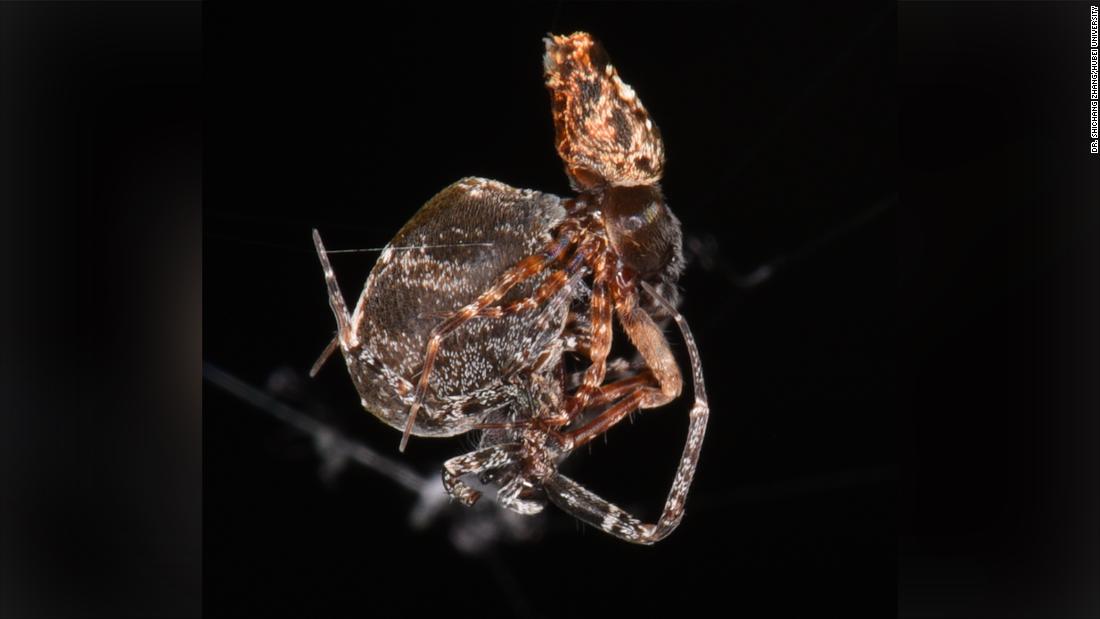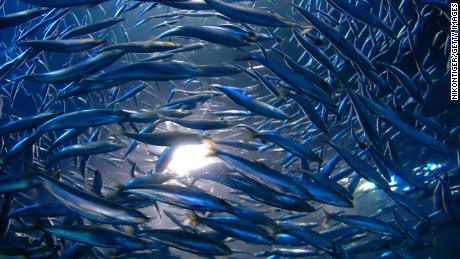
Philoponella prominens are social spiders, meaning they live in groups, but soon after they mate, the male arachnid has to rapidly leap away to avoid being eaten by its female partner, new research has revealed.
They make their homes in the woods of central China in places such as Hubei, Hunan and Jiangxi provinces, according to study author Shichang Zhang, an associate professor at Hubei University in China.
Other spider species such as the redback practice sexual cannibalism, but this is the first report of a spider species using superfast actions to escape being eaten by their partners.
Researchers examined 155 successful matings in a lab setting. In 152 of the matings, the male spiders were able to catapult away to safety, while the three male spiders who didn’t were eaten by their partners.
“Their sensing capability to danger is low, or they have been exhausted during mating, or just could not perform the catapult,” Zhang said of the three spiders who did not leap to safety.
Using a high-speed camera to capture the acrobatic moves, the scientists determined the male spiders compressed their front legs against the female, then rapidly pushed off to release hydraulic pressure and reached speeds of up to 34.5 inches per second (88 centimeters per second) to escape.
The arachnids could also spin up to 469 revolutions per second while leaping away to avoid sexual cannibalism, according to the study.
“I think it is mainly to escape the female, catapulting and spinning make it difficult for the females to catch it,” Zhang said.
If researchers removed one or both front legs, the male spiders courted potential female partners but made no attempts to mate, meaning both legs were necessary for successful mating, the study found.
When Zhang’s team prevented some male spiders from being able to catapult away, all of those spiders were eaten by their female partners, which led the researchers to believe catapulting was a necessary survival skill.
Female spiders select the sperm
The mating is ended by the female spider, and once the male partner senses the aggressiveness of its counterpart, it leaps to safety, Zhang said.
It is unknown why the female Philoponella prominens try to eat male spiders after mating, but it may be a sexual selection test to assess whether the males are worthy reproductive partners, Zhang said.
Unlike mammals, a female spider has a sac in its reproductive tract called the spermatheca that holds sperm and prevents it from meeting an egg. After the male injects the sperm into her body, she holds it there until she determines whether to use it, Zhang said.
If she wants to use it, she squeezes sperm from her spermatheca to fertilize her egg, he said. If she doesn’t want it, she can squeeze the sperm out of her body or change the spermatheca’s pH level to kill the sperm, Zhang added.
“Female may accept the sperms of male that can catapult but deplete the sperms of male that can be easily caught by her,” he said.
Hanging in there
In the communal web, female Philoponella prominens rarely leave, whereas their male counterparts venture to other webs to mate and can copulate with a female spider up to six times before moving onto another one, Zhang said.
Male spiders attached themselves to the end of a safety line of silk thread at the edge of a female partner’s web prior to mating and used it to aid in their escape as well, the study found.
When researchers cut the safety line during mating, they observed the males still catapulting away, but they would fall to the ground rather than climb up the safety line, according to the study.
Male spiders often repeat a behavior of mating, jumping away then crawling back to the same female to mate again, Zhang said.
In the future, Zhang would like to research whether there is a correlation between the catapulting ability of a male Philoponella prominens and its ability to reproduce successfully.
